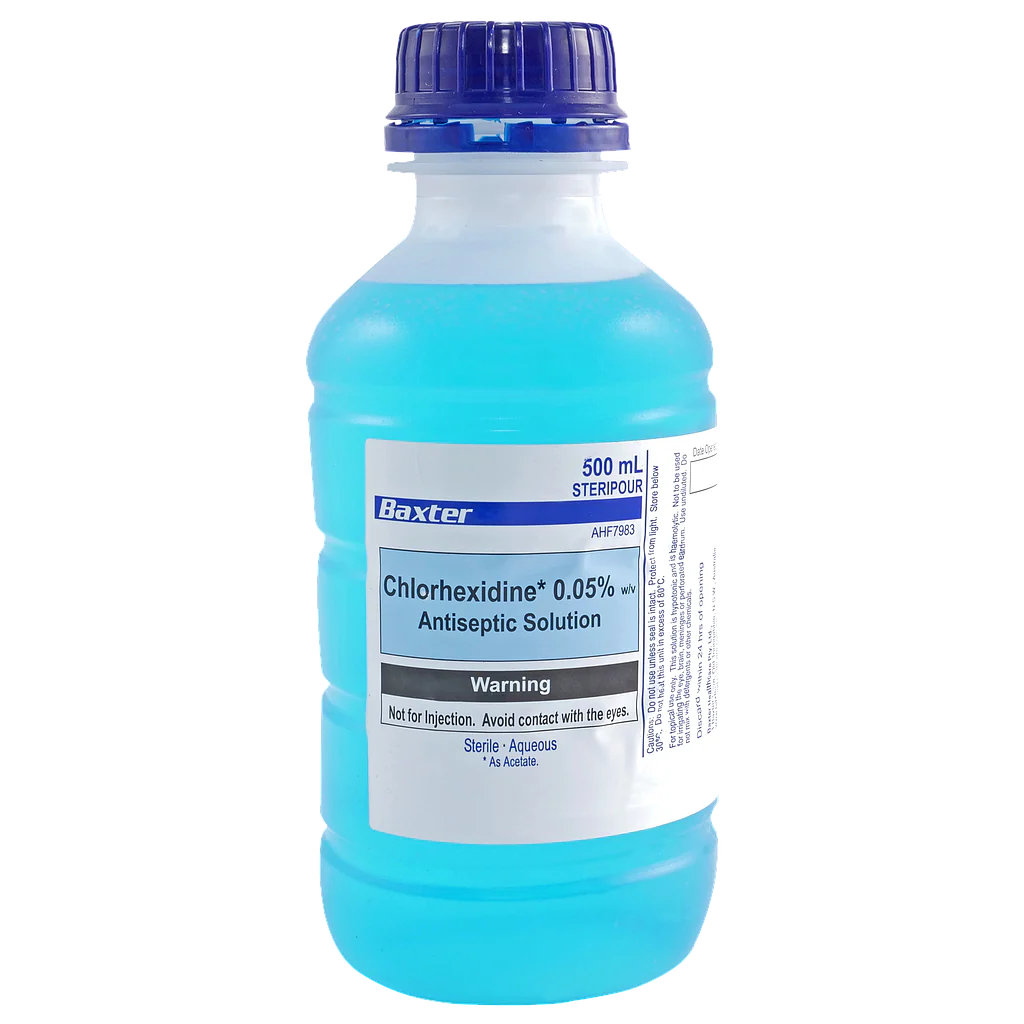🧴 Chlorhexidine Solution 5% (Concentrate)
📌 1. Prescription / Indication:
Chlorhexidine 5% solution is a concentrated antiseptic and disinfectant, commonly used for:
- Skin disinfection before surgical or invasive procedures (after dilution)
- Preoperative handwashing (as part of surgical scrub)
- Cleaning wounds, burns, or ulcers (diluted)
- Disinfection of medical instruments (non-critical)
- Sometimes used in dental rinses (in lower concentrations)
📄 2. Description:
- A concentrated, colorless to pale yellow liquid
- Contains 5% chlorhexidine gluconate as the active ingredient
- Typically diluted before use to 0.05%–4% depending on intended application
- Has broad-spectrum antimicrobial action, particularly against Gram-positive bacteria
🔬 3. Nature / Class:
- Pharmacological class: Antiseptic and Disinfectant
- Chemical nature: Bisbiguanide
- Mechanism: Disrupts bacterial cell membranes, causing cell death
🌟 4. Advantages:
- Broad-spectrum antibacterial activity
- Rapid onset of action and residual activity (binds to skin)
- Low systemic absorption
- Effective against Staphylococcus aureus, MRSA, and other skin flora
📦 5. Common Packaging:
- Supplied in 100 mL, 500 mL, or 1 L amber plastic or glass bottles
- Clearly labeled “Concentrate – Dilute before use”
🧊 6. Storage:
- Store below 30°C (86°F) in a cool, dry place
- Keep away from heat sources and direct sunlight
- Keep container tightly closed
- Do not freeze
👩⚕️ 7. Patient Advice:
- Do not apply undiluted to skin or mucosa – always dilute as advised
- For external use only
- Avoid contact with eyes, ears, and brain/spinal tissues
- May cause skin irritation or allergic reaction in some individuals
- Discontinue use if rash, redness, or burning occurs
⚗️ 8. Common Dilutions & Uses:
| Final Dilution | Use | How to Prepare |
|---|---|---|
| 0.05% | Wound irrigation, mucosal rinse | 1 mL of 5% in 100 mL water |
| 0.5%–1% | Skin antisepsis | 10–20 mL of 5% in 1 L |
| 2%–4% | Surgical hand scrub or pre-op skin prep | Ready-made in clinical settings |
🎯 9. Purpose:
- Prevents infections in surgical and medical settings
- Reduces hospital-acquired infections
- Ensures aseptic technique in minor and major procedures
⚠️ 10. Precautions / Warnings:
- Not for injection, ingestion, or use on meninges or middle ear
- Do not use on open brain tissue or perforated eardrums
- Avoid mixing with soaps or anionic agents (inactivates chlorhexidine)
- Highly toxic if ingested – keep out of reach of children

